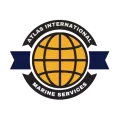Singapore Bolsters Maritime Defense with Plans for New Submarines and Aircraft

In a significant move to enhance its naval capabilities, Singapore has announced plans to procure two additional submarines and new maritime patrol aircraft.
This decision, revealed by Defence Minister Ng Eng Hen during a recent parliamentary session, underscores the city-state’s commitment to maintaining a robust and modern defense force in the face of evolving regional security challenges.
Expanding the Submarine Fleet
Singapore’s submarine fleet is set to grow with the acquisition of two more Invincible-class (Type 218SG) submarines.
This procurement will bring the total number of submarines in the Republic of Singapore Navy (RSN) to six, a strategic move aimed at ensuring a “steady state” for the fleet.
The decision comes on the heels of the successful commissioning of the first two submarines of this class, RSS Invincible and RSS Impeccable, which entered service in September 2024.
Why More Submarines?
The expansion of Singapore’s submarine fleet is driven by several factors:
- Operational Readiness: With submarines requiring rigorous maintenance cycles, having additional units ensures that a sufficient number are always operationally available.
- Strategic Deterrence: Submarines play a crucial role in Singapore’s defense strategy, providing covert intelligence-gathering capabilities and force projection beyond its immediate waters.
- Technological Advancement: The Invincible-class submarines, custom-made by German shipbuilder thyssenkrupp Marine Systems, are specifically designed to operate effectively in the tropical waters of Southeast Asia, representing a significant upgrade in capabilities.
Modernizing Maritime Patrol Capabilities
In addition to the submarine procurement, Singapore is actively evaluating options to replace its aging fleet of Fokker-50 maritime patrol aircraft, which have been in service since 1993.
The primary contenders for this role are:
– Boeing P-8A Poseidon: A state-of-the-art maritime patrol aircraft known for its advanced anti-submarine warfare (ASW) and intelligence, surveillance, and reconnaissance (ISR) capabilities.
– Airbus C295: A versatile aircraft that offers maritime patrol capabilities at a potentially lower cost point.
The choice between these platforms will likely depend on Singapore’s specific operational requirements, including the need for long-range surveillance and the ability to operate in diverse maritime environments.

Strategic Context and Regional Implications
Singapore’s decision to invest in these naval assets is not occurring in isolation.
It reflects a broader trend of military modernization across Southeast Asia, driven by complex regional security dynamics and the strategic importance of maritime routes.
The procurement aligns with Singapore’s long-standing approach to defense, which emphasizes maintaining a qualitative edge through technological innovation and strategic partnerships.
Regional Naval Procurement Trends
Singapore’s moves mirror similar efforts by other Southeast Asian nations to enhance their naval capabilities.
Countries like Vietnam, Indonesia, and Malaysia have also invested in submarines and advanced surface combatants in recent years, reflecting a regional focus on maritime security and deterrence.
This trend is largely motivated by the need to safeguard maritime interests and respond to evolving security challenges in the South China Sea and surrounding waters.
Economic and Strategic Considerations
The procurement of new submarines and maritime patrol aircraft represents a significant investment in Singapore’s defense capabilities.
While specific cost figures for these acquisitions have not been disclosed, previous estimates suggest that each Invincible-class submarine could cost around $1 billion, with maritime patrol aircraft like the P-8A Poseidon priced at approximately $150 million per unit.
Singapore’s ability to make such substantial investments in defense is underpinned by its strong economic position and consistent allocation of resources to military modernization.
The country typically spends a considerable portion of its GDP on defense, reflecting the high priority placed on maintaining a credible deterrent force.
In Summary,
Singapore’s plans to acquire additional submarines and new maritime patrol aircraft signify a major step in its ongoing efforts to modernize its naval capabilities.
These acquisitions will enhance the Republic of Singapore Navy’s ability to safeguard the nation’s maritime interests, contribute to regional stability, and respond effectively to a wide range of potential threats.
As Singapore moves forward with these procurement plans, the impact on regional security dynamics and the balance of naval power in Southeast Asia will be closely watched by neighboring countries and global powers alike.
The successful integration of these new assets into Singapore’s defense framework will undoubtedly strengthen its position as one of the most sophisticated naval forces in the region, despite its relatively small size.
Found this article interesting, and useful? Please feel free to interact, recommend and share.
If you have any questions about this topic or would like to discuss your own business needs, please contact us today!
Singapore Bolsters Maritime Defense with Plans for New Submarines and Aircraft Read More »


















